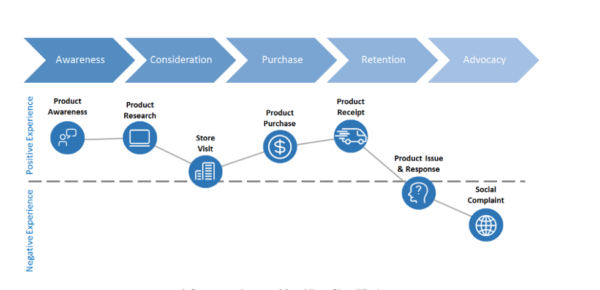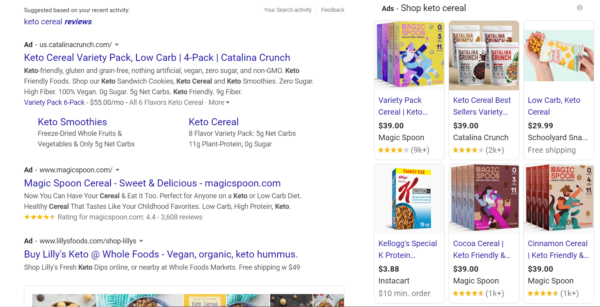
Marketing theory is often the driving force behind the decisions that businesses make about their marketing campaigns. However, to properly apply the science of marketing to your business, you first need to build a meaningful understanding of your customer.
At first, the consumer decision-making process may seem mysterious. Why do people make purchases? It is easy to oversimplify the drive behind buying habits as meeting the basic wants of the customer. But their motivation in each stage lies in deeply rooted psychological and physical needs. Understanding this premise is vital to making the most of the decision-making process.
By analyzing the essential stages of the decision-making process, you can gain valuable insights about your niche customers and the unique motivating forces behind their purchasing behaviors.
To make the most of your business, it is vital to consider the consumer’s process and try to influence their decisions at the source. This article will answer imperative questions like:
- What is the consumer decision-making process?
- What are the five stages of the consumer decision-making process?
- How can you impact the decision-making process?
There are many ways to influence your customers. Focusing on the right steps can help you maximize the benefits of marketing theory on your business.
What is the consumer decision-making process?
Simply put, the consumer decision-making process is the way in which your customers identify their wants and needs, research solutions for their needs, and make a decision to purchase. This process also includes periods of consideration and post-purchase evaluation.
Seems intuitive, doesn’t it?
Both in its definition and in practice, the consumer decision-making process is often quite logical. As an ecommerce business owner, you have the powerful opportunity to leverage the logical elements of this process to your benefit.
The online data of your customer’s preferences and habits can help you develop a marketing strategy that appeals to the shopper at every stage. This data can be compiled into tools such as a customer journey map to help you make the most of customer insights.

What are the five stages of the consumer decision-making process?
The consumer decision-making process — or customer journey — may go by many titles, but, no matter what you call it, the process includes five steps. To build strong customer connections, it is important to maximize your influence in each step.
The five stages of the consumer decision-making process are:
1. Awareness
The consumer initiates the first step of the decision-making process when they become aware of their need or want for a particular product or service. This can be brought about by emotional needs like hunger, illness, or sadness, or by an external factor like an effective blog or the smell of a familiar food.
Between external and internal stimuli, the consumer’s need is born. Once realized, the consumer’s desire drives them to seek out a brand that can provide the service or product they need.
This step is vital because it provides you with your first opportunity to connect with the customer.
2. Research
It is imperative that, when the customer seeks out a solution to their newfound need, you are a readily available answer. This stage includes seeking out businesses and conducting research on products and services.
Your opportunity in this stage lies in being as visible as possible wherever your customers will look. To make the most of this stage, make use of tools like:
During the research stage, your online presence and online marketing strategies are the keys to success. Without them, your audience will be unable to find you, and you will lose customers to your competitors.
3. Consideration
The third stage is when the consumer considers their options. During this time, the consumer may shop around or simply consider your product more seriously with additional research or by asking a friend.
To capitalize on this stage of the decision-making process, it is important that you have built an effective website with plenty of informative content. You can also make use of this stage with tools like automated emails and email segmentation to target prospective customers with personalized marketing efforts.
During this stage, consumers are considering factors such as:
- The quality of your product. How do your features compare with competitors? Will the customer be making a wise investment by purchasing your product?
- The price of your product. Have you priced your service or product at a competitive rate? Is the investment worth the reward?
- Their user experience. How easy is it to find information and make a purchase? How easy is it to receive the product? How difficult is it to return?
- Their connection with your brand. How is your audience connecting with your brand? How can you deepen brand loyalty with existing customers by leaning into your brand? How do you keep customers excited about your brand?
Referencing positive reviews, social media mentions, and incentives can help you convert a prospective shopper into a concrete customer in this step.
4. Purchasing decision
In this stage, the consumer is initiating their purchase. However, customers still abandon businesses in this late stage! Here, it is important that you develop an easy-to-use online store that ushers the consumer through the process without stress.
The goal is to encourage the shopper to see their purchase through to its conclusion, at which point you have successfully converted a potential customer into a paying one! While this may seem like the most important step, the ones leading up to it lay the vital foundation.
5. Evaluation
Once the consumer has made a purchase, they will evaluate their new product. This is a critical period in which they will either form a lasting connection with your brand or move on from it. Encourage recent customers with email campaigns and discounts to incentivize returning to your store.
Beyond this, the evaluation stage is the perfect time to nudge your customers to provide you with a positive review. The power of listings and reviews is undeniable — they can be essential for drawing new customers to your brand during the research phase.
How can you impact the decision-making process?
Throughout the decision-making process, you have the opportunity to deeply impact your consumer. Constant Contact offers marketing tools that can help you make the most of your new understanding of the consumer decision-making process. These include:
- Ads. When your customer begins their journey, it is essential that you appear in their initial solution searches. Make use of Google Ads, social media ads, and SEO to ensure you are visible to important members of your niche audience.
- Branded email templates. Consider which elements of your brand your customers respond to most clearly. Elevate this branding, and use Constant Contact’s branded templates to easily create consistent and polished correspondence.
- Automated emails. Especially during the research phase — or with an abandoned cart during the purchasing phase — automated emails can help you reconnect and sway hesitant customers. Use strong messaging and valuable content to put your customer’s mind at ease during the decision-making process. In the evaluation stage, use automation to keep consumers interested.
- Audience segmentation. When paired with customer data, this powerful tool can help you personalize your messaging to undecided customers. Easily tailor content and send it to the customers who will find it most valuable. You can use segmentation to target customers who have made specific types of purchases.
- Email tracking. Email and social media analytics help you keep a pulse on how active and engaged your customers are. Remember, beyond the evaluation stage, it is your goal to keep shoppers interested in your brand.
- Website building. The website-building tool makes it easy to create impactful websites that make online shopping easy for your customers. Easy-to-use portals and websites can help you retain happy customers.
- Social media engagement. Use social media campaigns to keep loyal customers and fans involved in your brand. Social media can yield repeat customers, powerful word-of-mouth recommendations, and trusted reviews.
To convert a paying customer into a brand advocate, it is essential to nurture a long-term relationship that is built on trust and engagement. Use online tools during every step of the consumer decision process to connect with customers from the beginning.

Now that you understand the basics of consumer decision-making, the five stages of the customer’s process, and the tools you can use to influence shoppers, you can convert your prospective buyers into loyal advocates.
Understanding the customer journey is only one element of developing an impactful marketing strategy. To learn more about how different aspects of marketing work together to build a successful business and customer base, check out The Download, a guide to online marketing.




